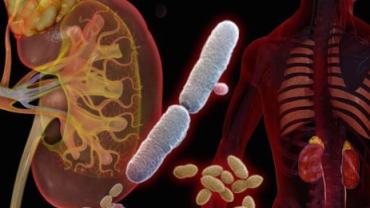
A quick search of the phrase “urinary tract infections” among common medical literature reveals numerous entries during the last half decade testifying to the concern and urgency with which we must approach this issue. Statistics have remained consistent in recognizing urinary tract infections (UTI) as one of the most common infections in developed countries and the most common reason for female visits to the emergency room. In fact the New England Journal of Medicine estimated that by the age of 32 nearly half of all women experience a UTI with a 25 percent rate of recurrence within the following 6 months. Even more concerning is the fact that UTIs are now one of the most common childhood conditions with a rate of recurrence potentially reaching 20% to 48%. Among pediatrics especially the risk for renal scarring hypertension and chronic renal failure resulting from recurrent UTIs has driven the common practice of using antibiotics prophylactically. However bacterial resistance and drug reactions are becoming too prominent. In addition children given antibiotics prophylactically are at increased risk for gastrointestinal complications and bone-marrow suppression. Therefore other preventative interventions are being sought.
D-Mannose
To date the most widely recognized and acceptable natural remedy against recurrent UTIs in both adults and children is cranberry. However recent studies are identifying D-mannose as the superior component of cranberry responsible for preventing bacterial adherence to urothelial cells thus helping to prevent recurrent UTIs. Pathogenic bacterial colonization occurs when FimH adhesin located on the type 1 fimbria of enteric bacteria binds to urothelial glycoproteins. D-mannose however competes for this binding site rendering bacterial adhesion impossible. It is important to note that only the D-isomer can bind to FimH adhesin. Although E. coli is traditionally the causative agent of UTIs other species of bacteria are becoming prevalent in these infections. Therefore prophylactic remedies must be effective against various organisms. D-mannose has been found to exert anti-adhesive effects on E. coli P. aeruginosa and Streptococcus sp.
Bearberry (Uva Ursi)
The leaves of evergreen shrub Arctostaphylos uva ursi have a long history of medicinal use in the treatment of lower urinary tract infections and cystitis. More widely accepted in Germany than the US medical literature does not often give due recognition to the usefulness of this herb. The mechanisms of action are numerous and give allegiance to the active component arbutin. Nearly 64% to 67% of arbutin is released in the urine upon oral ingestion and creates an environment resistant to E. coli P. mirabilis P. aeruginosa S. aureus and 70 other urinary bacteria. Arbutin’s antimicrobial activities owe to the fact that it increases the hydrophobicity of the microbial cell surface and thereby prevents adhesion to cell walls of the urinary tract. Uva ursi also acts as diuretic helping to flush infection from the urinary tract further preventing bacterial adhesion and colonization. It is approved use by the German Commission E for the treatment of urethritis is due to its anti-inflammatory properties. Inflammation is a consequential symptom of UTIs making uva ursi beneficial for helping to prevent UTI complications and recurrence.
Recent debate has been raised over the safety of an arbutin conjugate hydroquinone. The hepatic conjugation of arbutin into hydroquinone occurs after arbutin is rapidly absorbed in the small intestine. Hydroquinone has been assumed to be a hepatotoxin; however this assumption has not been well founded. A recent report in the International Journal of Toxicology reviewed the pharmacokinetics of arbutin in humans and determined there was no direct evidence that therapeutic daily doses of uva ursi caused any of the assumed toxicological risks and was in fact a safe therapeutic option for treating UTIs. This report was supported by a subsequent study on the safety of uva ursi which concluded that no pathology changes were seen in major organ systems after administering uva ursi in rabbits for 90 days justifying its therapeutic use.
Combining these gentle yet effective botanicals with natural diuretic agents such as parsley extract can only enhance the success of treatment. With the proper use of these nutrients bacterial resistance renal scarring and gastrointestinal complications do not have to be the outcomes for the millions of children and adults plagued by recurrent UTIs.